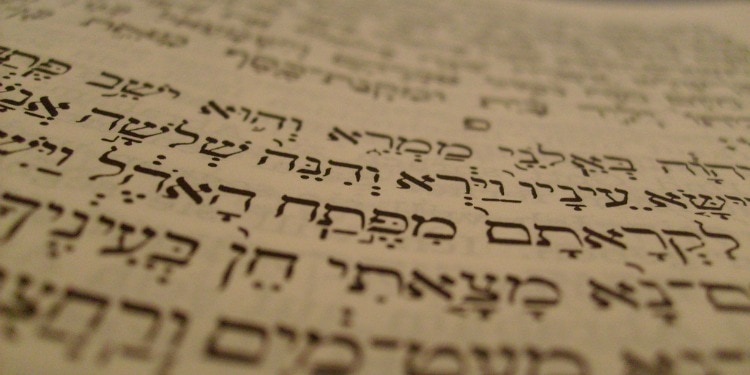The Gift of God’s Word
The Fellowship | November 9, 2016

Sunday was a very special day for my seven-year-old son and me – he received his first very-own copy of the Chumash (a Hebrew word which refers to the first five books of the Bible in book form, rather than a scroll). He’s in second grade and has been studying the book of Genesis since his first day of first grade. Each week, another link in the story of Creation was added as he proudly shared his newfound knowledge with my wife and I on Sabbath.
My son’s class also memorized many Bible verses by heart. He brought home pictures of Abraham, Sarah, and other biblical figures he drew in class, some of which are hanging on the walls of our home. Yet, until this past Sunday, my son did not have his own copy of the Chumash.
There’s a reason for that. The Israeli school system postpones giving a Chumash to children, and they must study the Bible for over a year prior to receiving it. We want kids to remember getting their Chumash as a highlight of their educational experience, and to develop a sense that this Book is not like the other books in their lockers.
Understandably, my son was extremely eager to receive his Chumash on Sunday, as were all the kids in his class. As soon as he woke up, he put on a nice clean dress shirt instead of the usual wrinkled t-shirt he likes to wear, as well as a nice pair of khakis, and before I could open my eyes to greet the morning he was at my bedside with an impatient smile asking, “Can we go yet, Dad?”
My son and I met his class in the school parking lot Sunday morning at 7:30. After roll call, we caravanned up north into the Galilean region of Israel. The northern part of Israel is where many of our ancient sages and mystics once lived and are now buried. These gravesites are holy sites as well as heritage sites. And some of these graves are visited by hundreds of thousands of worshipers each year. Our tradition holds that it is a great merit to pray by the gravesites of the righteous.
Our first stop was by the grave of Rabbi Yehuda Bar Ilia, who lived in northern Israel a few decades after the destruction of the Second Temple. After the destruction of the Temple and the subsequent exile that dispersed the Jewish people throughout a world which was foreign to our values and traditions, there was a grave concern that Judaism would be lost. With the help of God, a handful of Jewish sages took it upon themselves to revive the study of Torah among the Jewish people, and to imbed the traditions and practices of the Jewish people so they wouldn’t be forgotten in the harsh reality of exile.
Rabbi Yehuda Bar Illai was one of these sages, and his gravesite, surrounded by the Galilean mountains, is visited by thousands of people each year. It is concealed inside a small cave on the side of a mountain. A stone staircase leads the way down, with candles left by the last worshipers who visited the grave flickering through the darkness.
As we walked into the cave, my son, his friends from class, and I recited Psalms. The sound of our voices echoed off the walls, which, as I explained to my son, had already caught the soft whispers of countless prayers over the past two thousand years.
As we left the grave, the ceremony commenced in the small synagogue near the burial site. After we recited our morning prayers, my son’s teacher told a few stories about Rabbi Yehuda and how he risked his life at a time when the Roman conquerors forbade the Jews to study Torah, in order to preserve our heritage and to ensure that our bond to the Torah would never be broken.
Full of excitement, the children formed a line as each one was called to take his Chumash. And as each kid held their Chumash in their hands for the first time, I witnessed the torch of our heritage being passed down from one generation to the next, as it has for over three thousand years.
Our day continued as we traveled to the studio of a scribe who writes Torah scrolls, phylacteries, and mezuzot. The scribe explained the process of preparing parchment from the skin of kosher animals, taught about the laws that govern the writing of a Torah scroll, and also described a day in the life of a scribe.
After our visit with the scribe we ventured to one of northern Israel’s natural springs, where the kids answered biblical riddles, ate a cake shaped like a Torah scroll, and sang traditional Jewish songs.
On the way back home, after a day of incredible inspiration I looked out the window and into the wide open Israeli sky and thought about how fortunate we are to be living in this beautiful country where the soil itself tells the stories of the Bible. I pray that our children will grow up with a great sense of gratitude and an understanding of what a gift this land is and what a treasure our Torah is.
